Due Date: 1/31/2011
Subject: Art Comprehensive
WEEKLY LESSON PLAN Teacher: Peggy SIMMONS Week of: January 4-7, 2011 Subjects: Art Comprehensive/Art Drawing and Painting and Art 3D-- Lesson: Texture-Art Element Read and discuss Ch. 7 in the THE VISUAL EXPERIENCE text pp. 148-165. Sunshine State Standards to be covered: - The student acquires the knowledge and skills necessary to create, to perform, and to respond effectively to the arts.
- The student applies the creative process with arts knowledge and skills to reason and solve problems.
- The student uses art forms (visual arts) to communicate ideas and feelings.
- The student understands how the arts connect to other subject areas, life, and work.
Objectives: Students will: •· Perceive and describe textures in the environment and in artworks •· Differentiate between actual and simulated textures in artworks •· Understand how texture can be used to suggest emotional qualities in art •· Create a print or torn paper collage featuring textures The teacher will: --Use class text with students to discuss Texture-pages 148-165
--View and lead discussion of various artists' work discussing use of texture (Edouard Manet, Marilyn Levine, Dorothea Lange, Lele Peoples, Michael Sitow, Michelangelo, Van Gogh
--Assist students as needed
--Critique with students as studio work progresses Engaged Student Activities: •· Bell ringer sketch and vocabulary word each day turned in on Friday •· Study Vocabulary: gloss, matte, actual texture, stimulated textures, invented textures --View slide shows and discuss work of artists listed above --Create torn paper texture collage of an insect, animal, or fish --Texture printmaking project --Critique an Expressionist landscape Accommodations and/or Modifications for Students (ESE/ESOL/etc.) - Extra time to complete assignments.
- Extra attention and instruction from teacher.
- A work space apart from the body of the class.
Vocabulary: gloss, matte, actual texture, stimulated textures, invented textures, tactile Reading and/or Writing Strategies - The student understands the meaning of what is read. Read aloud and discuss.
- The student reads different materials for a variety of purposes. Use teacher handouts and textbooks and newspaper articles
- Previewing Vocabulary-knowledge rating
High-Order Questions: •· Explain the difference between actual and simulated textures. Point out the actual and simulated textures in the artworks on pp. 150-151. •· Choose an artwork from the Texture chapter and explain in a paragraph why it does or does not support the idea that texture is useful in expressing a mood or feeling. •· As you get closer to the subject does texture become more noticeable and important? •· What is functional texture in the natural world? Reteach/Reinforce Activity: critique drawings and paintings during studio work Materials Needed:
Text, visuals. Art materials Homework/Reinforcement of Lesson: Assessments: Art projects
Quiz: - Write the vocabulary terms. Then write an example for each texture type next to its term.
•· Explain the difference between actual and simulated textures. Point out the actual and simulated textures in the artworks on pp. 150-151. •· Choose an artwork from the Texture chapter and explain in a paragraph why it does or does not support the idea that texture is useful in expressing a mood or feeling. •· As you get closer to the subject does texture become more noticeable and important? •· What is functional texture in the natural world?
Due Date: 2/20/2010
Subject: Art Comprehensive
EAST GADSDEN HIGH SCHOOL WEEKLY LESSON PLAN 
Teacher: Peggy SIMMONS Weeks of: Feb. 1-12, 2010 Subject: Art Comprehensive 3D_2nd and 3rd periods-Lesson continued-Pop-up Cityscape Sunshine State Standards to be covered: - The student acquires the knowledge and skills necessary to create, to perform, and to respond effectively to the arts.
- The student applies the creative process with arts knowledge and skills to reason and solve problems.
- The student uses art forms (visual arts) to communicate ideas and feelings.
- The student understands how the arts connect to other subject areas, life, and work.
Objectives: - Students will create a cityscape with realistic subjects. They will focus on lines, textures, and shapes.
- Students will understand foreground (with the most detail and color), middle ground (buildings and shapes of medium height that will appear in the middle ground. and background (tall buildings and shapes that will appear in the background.
- Students will be familiar with and discuss various city scenes by famous artists.
The teacher will: Have many visuals of city scenes
Have examples of finished pop-up cityscapes
Assist students as needed
Discuss class vocabulary and techniques
Critique with students as work progresses Engaged Student Activities: Bell ringer sketch and vocabulary word each day turned in on Friday View slide show of cities Create their pop-up cities Discussion on various city scenes by famous artists Accommodations and/or Modifications for Students (ESE/ESOL/etc.) - Extra time to complete assignments.
- Extra attention and instruction from teacher.
- A work space apart from the body of the class.
Basic Vocabulary: see attached architecture vocabulary sheet-more terms are added during class discussion Reading and/or Writing Strategies - The student understands the meaning of what is read. Read aloud and discuss.
- The student reads different materials for a variety of purposes. Use teacher handouts and textbooks and newspaper articles
High-Order Questions: Looking at 3 city scenes by 3 famous artists-which painting best supports the aesthetic viewpoint that what is important in an artwork is a realistic subject? Reteach/Reinforce Activity: Materials Needed:
Text, visuals. Art materials, travel magazines Homework/Reinforcement of Lesson: Assessments: Art projects, quiz
Due Date: 2/15/2010
Subject: Drawing/Painting
EAST GADSDEN HIGH SCHOOL WEEKLY LESSON PLAN Teacher: Peggy SIMMONS Weeks of: Feb. 1-12, 2010 Subject: Art Drawing and Painting-- Lesson: Introduction to Portraits (Self-Portraits) Unit Completion Sunshine State Standards to be covered: - The student acquires the knowledge and skills necessary to create, to perform, and to respond effectively to the arts.
- The student applies the creative process with arts knowledge and skills to reason and solve problems.
- The student uses art forms (visual arts) to communicate ideas and feelings.
- The student understands how the arts connect to other subject areas, life, and work.
Objectives: - Students will perceive and understand the many different purposes and styles of portraiture
- Students will define portraiture and identify artistic styles
- Consider alternative views of portraiture and art in general
- Students will understand the relationships between facial anatomy and the depiction of facial features
- Students will create a realistic portrait drawing from a live model
- Students will create a self-portrait
- Students will practice contour drawing
- Students will practice wash and lift off techniques with watercolor
- Identify and analyze key components of a portrait and self-portrait
The teacher will: Use class text with students to discuss portraits-page 133-157
View and lead discussion PowerPoint "The artist sees' a portrait"
Assist students as needed
Critique with students as work progresses Engaged Student Activities: Bell ringer sketch and vocabulary word each day turned in on Friday --Study Vocabulary - Look at historical examples of portraits (PowerPoint) (Students compare and contrast)
- Read and discuss pp. 133-157 in drawing textbook
- Working from resource images students attempt a painting in black and white using contour drawing, resist and value.
- Color-mixing sample using 1 set of complementary colors to get six to eight new colors. Paint mixed colors the same size and shape in horizontal rows. Then add four to six new color shades to the rectangular sheets of complements by mixing black with each set. Label color sheets with names of complementary sets
- Students attempt painting using complements and black
Accommodations and/or Modifications for Students (ESE/ESOL/etc.) - Extra time to complete assignments.
- Extra attention and instruction from teacher.
- A work space apart from the body of the class.
Vocabulary: Reading and/or Writing Strategies - The student understands the meaning of what is read. Read aloud and discuss.
- The student reads different materials for a variety of purposes. Use teacher handouts and textbooks and newspaper articles
High-Order Questions: How does the human eye work like a camera?
How do the photographer and the painter work alike when making a portrait? Reteach/Reinforce Activity: critique drawings and paintings during studio work Materials Needed:
Text, visuals. Art materials, power points Homework/Reinforcement of Lesson: Assessments: Art projects, quiz
Due Date: 10/28/2009
EAST GADSDEN HIGH SCHOOL WEEKLY LESSON PLAN Teacher: Peggy SIMMONS Weeks of: Oct. 26-Nov. 6, 2009 Subject: Art Comprehensive 3D-- Lesson: Introduction to Ceramics-Coil Hand building Technique Sunshine State Standards to be covered: - The student acquires the knowledge and skills necessary to create, to perform, and to respond effectively to the arts.
- The student applies the creative process with arts knowledge and skills to reason and solve problems.
- The student uses art forms (visual arts) to communicate ideas and feelings.
- The student understands how the arts connect to other subject areas, life, and work.
Objectives: - Students will be able to make a coil construction.
- Students will become familiar with the qualities of earthenware clay. Students will understand and practice manipulation of the type of clay available to them.
- Students will learn how to set up, put away, and properly use the equipment, materials, and tools they need to create their products.
The teacher will: Use class text with students to review clay properties
Have examples of varied forms of clay pots / vessel
Assist students as needed
Critique with students as work progresses Engaged Student Activities: Bell ringer each day turned in on Friday --Study Vocabulary - Look at historical examples of clay work including Mayan ceramics
- Read and discuss pp. 44-51 in clay text-EXPERIENCE CLAY
- Discuss joining two pieces of clay
- Look at variations on the basic coil pot
- Watch teacher demonstration creating a coil construction.
- Students create a coil construction clay object
- Discuss tea and its influence on ceramics (tea ceremony and tea bowls)
Accommodations and/or Modifications for Students (ESE/ESOL/etc.) - Extra time to complete assignments.
- Extra attention and instruction from teacher.
- A work space apart from the body of the class.
Basic Clay Vocabulary: Pinching-a hand-building technique that involves squeezing the clay, usually between fingers and thumb Bisque-Ceramic ware that has gone through the first firing at a relatively low temperature and still maintains its porous state Bone Dry-Stage of drying when moisture in the clay body has evaporated so the clay surface no longer feels cold Ceramics-Objects made from clay that permanently retain their shape after they have been heated to specific temperatures Coiling-attaching rolls of clay together to form pottery Drying-the elimination of water from clay pieces before firing Flange-A clay ridge that holds the lid of a pot, allowing it to rest securely. It can either be on the pot or the lid Glaze-A coating of glass that is fused to the surface of a ceramic piece Incise-to remove clay by carving Hand-building-making clay forms by nonmechanical process, such as pinching, coiling, and slab building Greenware-Unfired pottery or sculpture Matte or matt-dull surface, not shiny Leather-hard-The stage between plastic and bon dry when clay has dried, but may still be carved or joined to other pieces. Kiln-oven for firing clay to maturity Raw clay-Unfired clay Scoring-scratching the edges of clay before joining them together Terracotta-an iron-bearing earthenware clay that fires to an earth red color Transparent glaze-a clear glaze Underglaze-any coloring element, such as oxides or commercial colorants, applied prior to glaze application Ware-a term for any ceramic Wedging-A way of improving the workability of clay by reforming the mixture to make it homogeneous and even in texture while eliminating air bubbles. Reading and/or Writing Strategies - The student understands the meaning of what is read. Read aloud and discuss.
- The student reads different materials for a variety of purposes. Use teacher handouts and textbooks and newspaper articles
High-Order Questions: What are various hand-building techniques?
What are the stages of clay from creation to completion?
What elements and principles of art have you used to create your ceramic artwork?
What historical information/artists have influenced your work? Reteach/Reinforce Activity: critique pots during studio work Materials Needed:
Text, visuals. Art materials Homework/Reinforcement of Lesson: Diego Rivera Handout Assessments: Art projects, quiz
Due Date: 10/28/2009
EAST GADSDEN HIGH SCHOOL WEEKLY LESSON PLAN Teacher: Peggy SIMMONS Weeks of: Oct. 26-Nov. 6, 2009 Subject: Drawing/Painting Sunshine State Standards to be covered: - The student acquires the knowledge and skills necessary to create, to perform, and to respond effectively to the arts.
- The student applies the creative process with arts knowledge and skills to reason and solve problems.
- The student uses art forms (visual arts) to communicate ideas and feelings.
- The student understands how the arts connect to other subject areas, life, and work.
Objectives: - Students will use human or animal skeleton as subject of pencil drawing
- Students will understand the use permanent ink (markers and pens) to ink the pencil lines
- Students will add transparent watercolor washes for color
Engaged Student Activities: Bell ringer each day turned in on Friday --Study Vocabulary - Studio activity:-Skeleton Drawing and Painting using dip pens and watercolors
Students will use human or animal skeleton as subject of pencil drawing - Read about the Days of the Dead, discuss and look at slides
Accommodations and/or Modifications for Students (ESE/ESOL/etc.) - Extra time to complete assignments.
- Extra attention and instruction from teacher.
- A work space apart from the body of the class.
Lesson Vocabulary: Vocabulary in Spanish: - flores - flowers
- ofrenda - offering
- dulces - candies
- calavera - literally skull; or imaginary and satirical obituaries which appear in newspapers; or satirical verses
- naranjas - oranges
- calaca - skeleton
- canas - sugar canes
- pan de muertos - Day of the Dead bread
- cultura - culture
- angelitos - young children who have died and are remembered on Day of Dead.
Other vocabulary: - Oaxaca, Mexico
- Sculpture reliefs
- Punched paper--papel picado
- Commemorative
- Rites
- Deceased
- Accouterments
- Votive
- Gruel
- Repast
- Tiers
- Copal
- Coronas
- Festooned
- Pantheons
- Celebrants
- Repast
- Itinerary
Reading and/or Writing Strategies - The student understands the meaning of what is read. Read aloud and discuss.
- The student reads different materials for a variety of purposes. Use teacher handouts and textbooks and newspaper articles
High-Order Questions: How are the Days of the Dead celebrated?
Why is this celebration very meaningful?
How is death thought of by the people celebrating the Days of the Dead? Reteach/Reinforce Activity: Materials Needed:
Text, visuals. Art materials Homework/Reinforcement of Lesson: Diego Rivera Handout Assessments: Art projects, quiz
Due Date: 5/29/2009
Students are illustrating stories written by Havana El. School students. Dr. Beverly Nash, project director of the Character Education Initiative of the Gadsden County School District, is publishing a book with the elementary students' stories and the high school art students' illustrations. Each art student is asked to illustrate 4 stories and write a very concise autobiography to accompany their illustrations. 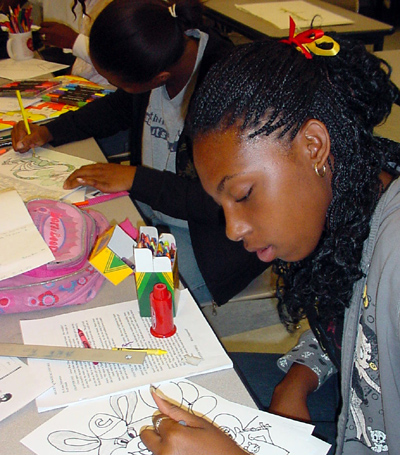 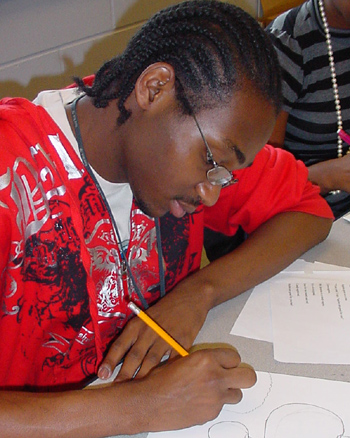
Due Date: 2/19/2009
Quiz--Friday--Feb. 20, 2009
Periods 3, 4 and 5 Know this material: Color Schemes Complementary colors Split Complementary color scheme Cool Colors Warm Colors Analagous Colors Neutrals Pigment Tints Shades Value Chiaroscuro Spectrum Be able to draw and label the 12 hue color wheel. Be ale to list the primaries, secondaries and tertiary or intermediate colors.
Due Date: 5/8/2008
EAST GADSDEN HIGH SCHOOL WEEKLY LESSON PLAN Teacher: Peggy SIMMONS Week of: April 7-11, 2008 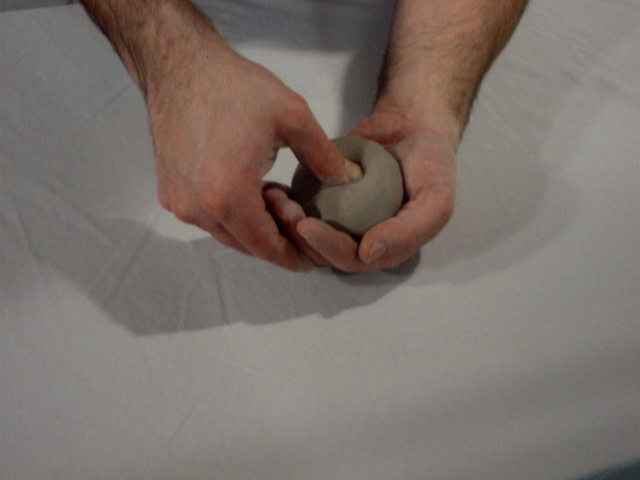 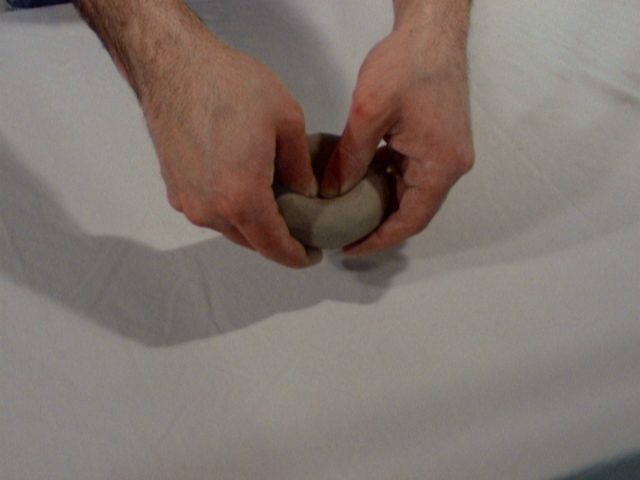 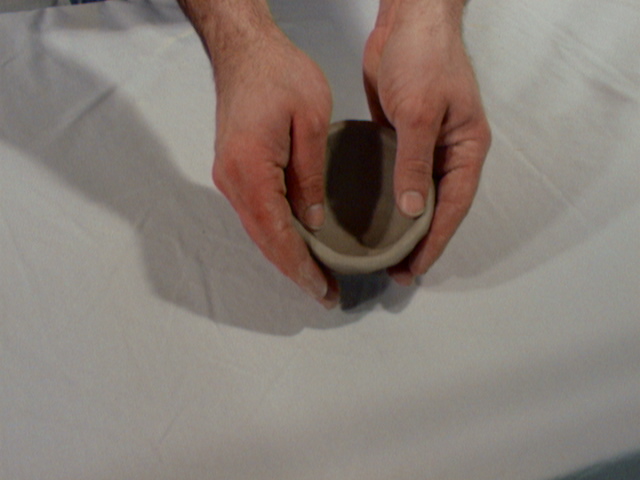
Subject: ART 2/D, 3/D Comprehensive and Drawing/Painting Lesson: Introduction to Ceramics-Pinch Hand building Technique Objectives: - Students will be able to make a pinch pot, and combine 2 pinch pots to form a rattle or vase.
- Students will become familiar with the qualities of earthenware clay. Students will understand and practice manipulation of the type of clay available to them.
- Students will learn how to set up, put away, and properly use the equipment, materials, and tools they need to create their products.
Sunshine State Standards to be covered: - VA.A.1.4
- VA.B.1.4
- VA.C.1.4
- VA.D.1.4
- The student acquires the knowledge and skills necessary to create, to perform, and to respond effectively to the arts.
- The student applies the creative process with arts knowledge and skills to reason and solve problems.
- The student uses art forms (visual arts) to communicate ideas and feelings.
- The student understands how the arts connect to other subject areas, life, and work.
The teacher will: - Use class text with students to review clay properties
Have examples of varied forms of clay pots / vessel
Assist students as needed
Critique with students as work progresses
Activities: - Look at historical examples of clay work including Mayan ceramics
- Read and discuss pp. 44-51 in clay text-EXPERIENCE CLAY
- Discuss joining two pieces of clay
- Look at variations on the basic pinch pot
- Watch teacher demonstration creating a rattle or a bottle from 2 pinch pots of the same size.
- Students create a rattle or bottle from 2 pinch pots
- Discuss tea and its influence on ceramics (tea ceremony and tea bowls)
Basic Clay Vocabulary: Pinching-a hand-building technique that involves squeezing the clay, usually between fingers and thumb Bisque-Ceramic ware that has gone through the first firing at a relatively low temperature and still maintains its porous state Bone Dry-Stage of drying when moisture in the clay body has evaporated so the clay surface no longer feels cold Ceramics-Objects made from clay that permanently retain their shape after they have been heated to specific temperatures Coiling-attaching rolls of clay together to form pottery Drying-the elimination of water from clay pieces before firing Flange-A clay ridge that holds the lid of a pot, allowing it to rest securely. It can either be on the pot or the lid Glaze-A coating of glass that is fused to the surface of a ceramic piece Incise-to remove clay by carving Hand-building-making clay forms by nonmechanical process, such as pinching, coiling, and slab building Greenware-Unfired pottery or sculpture Matte or matt-dull surface, not shiny Leather-hard-The stage between plastic and bon dry when clay has dried, but may still be carved or joined to other pieces. Wedging--A way of improving the workability of clay by reforming the mixture to make it homogeneous and even in texture while eliminating air bubbles. Accommodations and/or Modifications for Students (ESE/ESOL) - Extra time to complete assignments.
- Extra attention and instruction from teacher.
- A work space apart from the body of the class.
- Vocabulary in Spanish as well as English
Due Date: 4/28/2008
WEEKLY LESSON PLAN Weeks of: April 21-May 2, 2008
Subject: ART 2/D, 3/D Comprehensive and Drawing/Painting Lesson: Introduction to Ceramics-SLAB Hand building Technique
  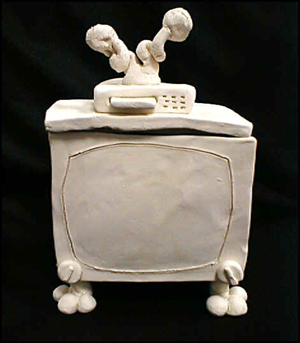 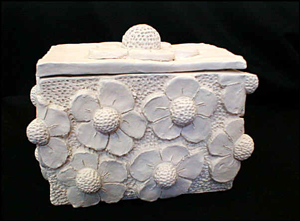
Objectives: - Students will be able to make a slab construction.
- Students will become familiar with the qualities of earthenware clay. Students will understand and practice manipulation of the type of clay available to them.
- Students will learn how to set up, put away, and properly use the equipment, materials, and tools they need to create their products.
Sunshine State Standards to be covered: - VA.A.1.4
- VA.B.1.4
- VA.C.1.4
- VA.D.1.4
- The student acquires the knowledge and skills necessary to create, to perform, and to respond effectively to the arts.
- The student applies the creative process with arts knowledge and skills to reason and solve problems.
- The student uses art forms (visual arts) to communicate ideas and feelings.
- The student understands how the arts connect to other subject areas, life, and work.
The teacher will: - Use class text with students to review clay properties
Have examples of varied forms of clay pots / vessel
Assist students as needed
Critique with students as work progresses
Activities: - Look at historical examples of clay work including Mayan ceramics
- Read and discuss slab construction in clay text-EXPERIENCE CLAY
- Discuss joining two pieces of clay
- Look at variations on the basic slab pot
- Watch teacher demonstration creating a slab construction.
- Students create a slab construction clay object
Basic Clay Vocabulary:
Pinching-a hand-building technique that involves squeezing the clay, usually between fingers and thumb Bisque-Ceramic ware that has gone through the first firing at a relatively low temperature and still maintains its porous state Bone Dry-Stage of drying when moisture in the clay body has evaporated so the clay surface no longer feels cold Ceramics-Objects made from clay that permanently retain their shape after they have been heated to specific temperatures Coiling-attaching rolls of clay together to form pottery Drying-the elimination of water from clay pieces before firing Flange-A clay ridge that holds the lid of a pot, allowing it to rest securely. It can either be on the pot or the lid Glaze-A coating of glass that is fused to the surface of a ceramic piece Incise-to remove clay by carving Hand-building-making clay forms by nonmechanical process, such as pinching, coiling, and slab building Greenware-Unfired pottery or sculpture Matte or matt-dull surface, not shiny Leather-hard-The stage between plastic and bon dry when clay has dried, but may still be carved or joined to other pieces. Kiln-oven for firing clay to maturity Raw clay-Unfired clay Scoring-scratching the edges of clay before joining them together Terracotta-an iron-bearing earthenware clay that fires to an earth red color Transparent glaze-a clear glaze Underglaze-any coloring element, such as oxides or commercial colorants, applied prior to glaze application Ware-a term for any ceramic Wedging-A way of improving the workability of clay by reforming the mixture to make it homogeneous and even in texture while eliminating air bubbles. Accommodations and/or Modifications for Students (ESE/ESOL) - Extra time to complete assignments.
- Extra attention and instruction from teacher.
- A work space apart from the body of the class.
- Vocabulary in Spanish as well as English
Due Date: 4/18/2008
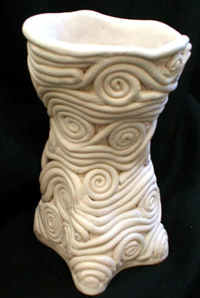 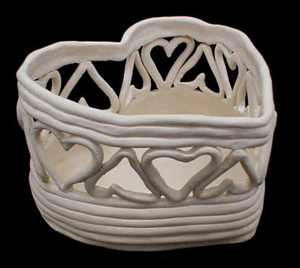 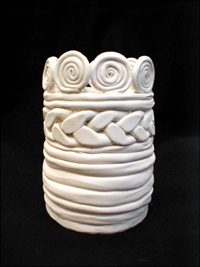 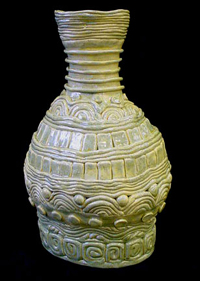  EAST GADSDEN HIGH SCHOOL WEEKLY LESSON PLAN Teacher: Peggy SIMMONS Week of: April 14-18, 2008 Subject: ART 2/D, 3/D Comprehensive and Drawing/Painting Lesson: Introduction to Ceramics-Coil Hand building Technique Objectives: - Students will be able to make a coil construction.
- Students will become familiar with the qualities of earthenware clay. Students will understand and practice manipulation of the type of clay available to them.
- Students will learn how to set up, put away, and properly use the equipment, materials, and tools they need to create their products.
Sunshine State Standards to be covered: - VA.A.1.4
- VA.B.1.4
- VA.C.1.4
- VA.D.1.4
- The student acquires the knowledge and skills necessary to create, to perform, and to respond effectively to the arts.
- The student applies the creative process with arts knowledge and skills to reason and solve problems.
- The student uses art forms (visual arts) to communicate ideas and feelings.
- The student understands how the arts connect to other subject areas, life, and work.
The teacher will: - Use class text with students to review clay properties
Have examples of varied forms of clay pots / vessel
Assist students as needed
Critique with students as work progresses
Activities: - Look at historical examples of clay work including Mayan ceramics
- Read and discuss pp. 44-51 in clay text-EXPERIENCE CLAY
- Discuss joining two pieces of clay
- Look at variations on the basic coil pot
- Watch teacher demonstration creating a coil construction.
- Students create a coil construction clay object
- Discuss tea and its influence on ceramics (tea ceremony and tea bowls)
Basic Clay Vocabulary: Pinching-a hand-building technique that involves squeezing the clay, usually between fingers and thumb Bisque-Ceramic ware that has gone through the first firing at a relatively low temperature and still maintains its porous state Bone Dry-Stage of drying when moisture in the clay body has evaporated so the clay surface no longer feels cold Ceramics-Objects made from clay that permanently retain their shape after they have been heated to specific temperatures Coiling-attaching rolls of clay together to form pottery Drying-the elimination of water from clay pieces before firing Flange-A clay ridge that holds the lid of a pot, allowing it to rest securely. It can either be on the pot or the lid Glaze-A coating of glass that is fused to the surface of a ceramic piece Incise-to remove clay by carving Hand-building-making clay forms by nonmechanical process, such as pinching, coiling, and slab building Greenware-Unfired pottery or sculpture Matte or matt-dull surface, not shiny Leather-hard-The stage between plastic and bon dry when clay has dried, but may still be carved or joined to other pieces. Kiln-oven for firing clay to maturity Raw clay-Unfired clay Scoring-scratching the edges of clay before joining them together Terracotta-an iron-bearing earthenware clay that fires to an earth red color Transparent glaze-a clear glaze Underglaze-any coloring element, such as oxides or commercial colorants, applied prior to glaze application Ware-a term for any ceramic Wedging-A way of improving the workability of clay by reforming the mixture to make it homogeneous and even in texture while eliminating air bubbles. Accommodations and/or Modifications for Students (ESE/ESOL) - Extra time to complete assignments.
- Extra attention and instruction from teacher.
- A work space apart from the body of the class.
- Vocabulary in Spanish as well as English
|